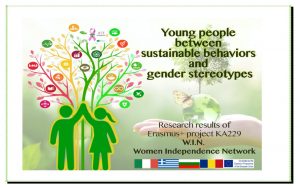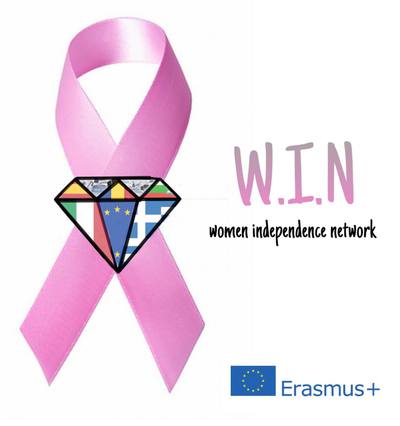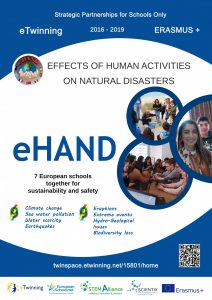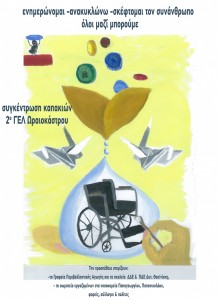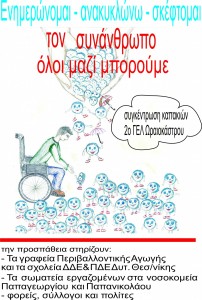«Young people between sustainable behaviors and gender stereotypes»
Research results of Erasmus+ project KA219 «W.I.N. – Women Indipendence Network», EP num. 2019-IT02-KA229-062405_2
Maria Nica, Coordinator
Research group members
Zhivka Babarova, Georgios Chatzigeorgiou, Elena Roxana Visan.,
Research: theoretical framework and methodological apparatus
By Maria Nica – Erasmus+ Ambassador
Starting from the assumption that with “gender” sociology refers to the socially and culturally constructed character
of masculinity and femininity (with consequent disparities that often mark the hierarchical relationships between women
and men both in terms of social role and that of the imaginary ), it is in childhood and in relationships with adults in the
family and in educational and school services that the times, places and significant interactions at the origin of these
construction processes must be identified. These representations are even more relevant as they condition the
sustainable behaviors of young people and adults.
Given these premises, the research examined gender representations and gender relations of students from the
four partner countries of the Erasmus + W.I.N. Women Independence Network, crossing gender stereotypes with the
sustainable behaviors of young people to understand how gender representations affect relationships and practices
Starting from a multidisciplinary perspective that allowed an articulated analysis of the problems, the research
group arrived at some fundamental thematic axes around which it developed, on the one hand, some priority research
questions and, on the other, the elaboration of specific investigation tools, deliberately developed according to an
interdisciplinary approach:
• What are the stereotyped images that affect the definition and expression of male and female roles today?
• What are the representations and views on genders and gender relationships in adolescents from different
countries?
• What implicit or explicit gender education emerges within the families of the students involved in the research?
1. The framework of the research: structure and phases of research
The research lasted 8 months and ended in May 2022.
The project achieved the research objectives through different stages of progress, each of which focused on
different investigation tools according to an interdisciplinary perspective.
The first phase of the research (documentary phase, September 2021 – December 2021) consisted in the analysis
of the scientific literature, national and international, and in the recognition of data and research on the topics in question.
The research group collected an extensive bibliography multidisciplinary and international, including monographs, articles
in specialized journals, conference proceedings and abstracts of research carried out at local, national and European
level on topics similar to those investigated.
The documentation collected was a reference in the development of the research hypotheses, in the structuring of
the investigation devices and in the data interpretation phase.
The second phase of the research (quantitative phase, January 2022 – April 2022) involved the collection of
quantitative data on the subject of the research through the administration of a structured questionnaire specially
developed with google form, and composed of two parts, one relating to stereotypes. gender and the other dedicated to
the sustainable behavior of young people.
After testing the questionnaires and revising the tools in the light of the data and suggestions collected, the research
group administered the questionnaire by sending the link of the form to the English language teachers of the various
partner schools of the Erasmus + Project. Subsequently, the statistical processing of the data was carried out using Excel.
The third phase of the research (qualitative phase, May 2022 – June 2022) involved the collection of qualitative
data on the subject of the research through the conduct and implementation of a focus group in the schools of the four partner countries of the W.I.N. In this phase, the research group has provided for the shared construction of an interview
grid, aimed at students who have participated in the Erasmus + mobility of the W.I.N. The outline for conducting the focus
group was intended to investigate some of the most relevant issues with respect to the topic investigated (among those
identified through the data collected with the questionnaire in the previous research phase); focus groups were then set
up in the various locations of the partner schools and each focus group was audio-recorded and subsequently transcribed
and analyzed in the narrative content.
The last part of the research (July 2022) concerned the analysis of quantitative and qualitative data through an
exploratory reading of qualitative data with which it was possible to identify some thematic nodes and a statistical analysis
of quantitative data.
The last few months have also been dedicated to the dissemination phase of the results (August 2022 –
September 2022); from the drafting of the final report to the dissemination plan of the research results which includes the
publication of the final report online and the organization of a final workshop for the presentation of the research aimed
at all those involved in the survey. and to local stakeholders. It should be noted that in the last mobility of the Erasmus +
W.I.N. in Italy, a work-in-progress report of the research was presented with an ad hoc workshop, as a form of ongoing
dissemination.
The Report presents the methodological apparatus and the results of the research and is structured in four parts:
the first dedicated to the methodological procedures developed and adopted by the research, the second concerns the
presentation of quantitative data, the third presents the analysis of qualitative data; the last part contains the attachments
relating to the investigation tools and other documentation materials of the research path.
1.2 Quantitative and qualitative phase of the research: the questionnaire and the focus group
As regards the quantitative phase, a representative survey sample was identified; the structured questionnaire addressed to
partner high school students was developed, tested and administered (the link to the questionnaire is attached); we then
proceeded to the phase of data entry, the statistical processing of the data collected and their interpretation.
The areas investigated by the questionnaire were two: gender stereotypes and the sustainability of youth behavior.
Subsequently, the two areas were correlated to verify if and how gender affects sustainable behaviors at the youth level.
The questionnaire is anonymous to ensure greater freedom in the answers and consists of three items relating to structural data
(sex, nationality and age), 14 questions relating to gender stereotypes and 26 relating to sustainable behavior, for a total of 33
questions and variables. A total of 1092 questionnaires were filled in.
For the composition of the sample, the age group of students between 14 and 19 years was taken into account for each school,
and the link for completing the questionnaire was sent to all.
As regards the quantitative phase, a representative survey sample was identified; the structured questionnaire addressed to
partner high school students was developed, tested and administered (the link to the questionnaire is attached); we then
proceeded to the phase of data entry, the statistical processing of the data collected and their interpretation.
The areas investigated by the questionnaire were two: gender stereotypes and the sustainability of youth behavior.
Subsequently, the two areas were correlated to verify if and how gender affects sustainable behaviors at the youth level.
The questionnaire is anonymous to ensure greater freedom in the answers and consists of three items relating to structural data
(sex, nationality and age), 14 questions relating to gender stereotypes and 26 relating to sustainable behavior, for a total of 33
questions and variables. A total of 1092 questionnaires were filled in.
For the composition of the sample, the age group of students between 14 and 19 years was taken into account for each school,
and the link for completing the questionnaire was sent to all.

